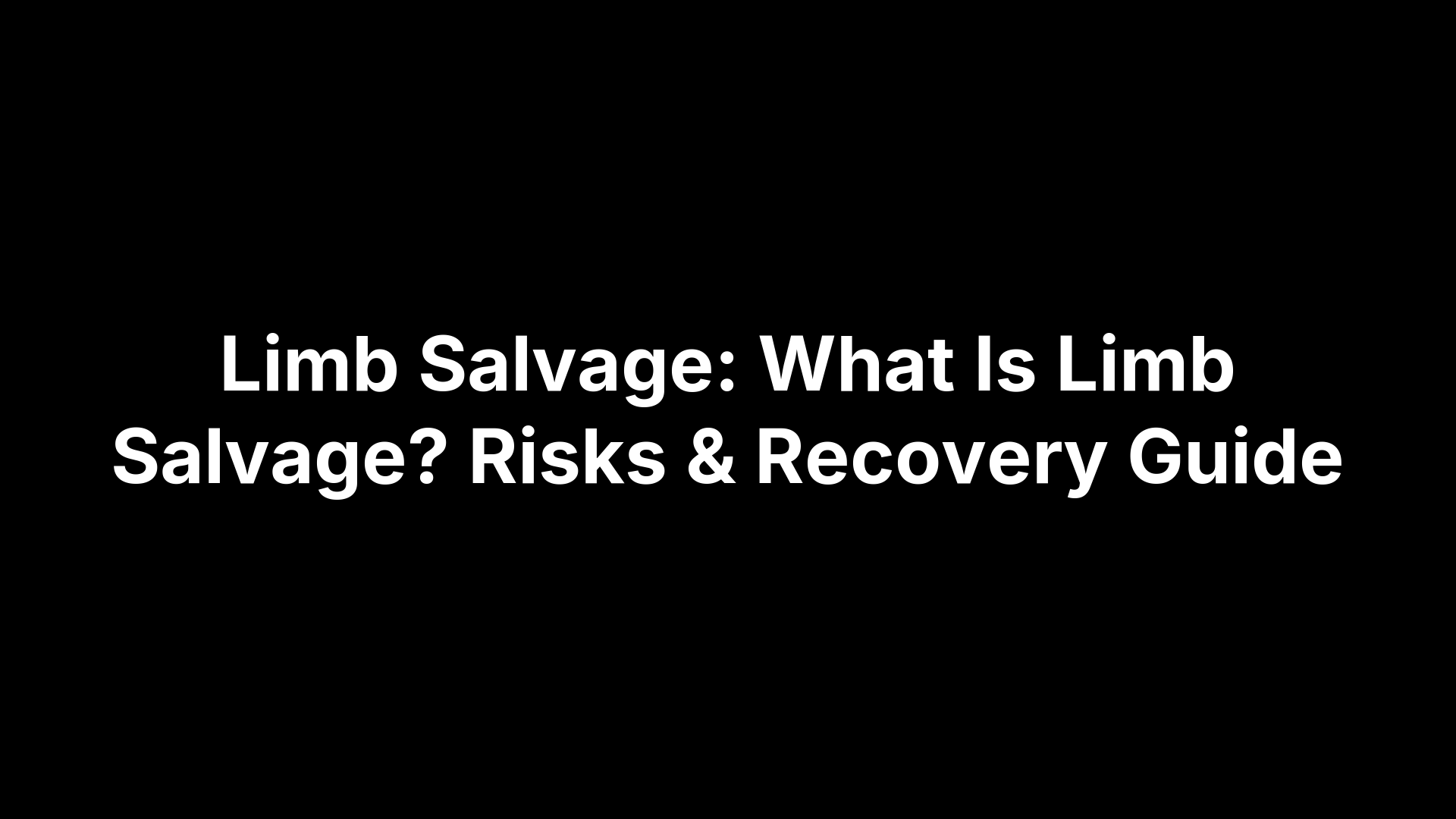A fresh cut, scraped heel, stubborn blister, or slow-to-close surgical site can derail your day—especially on the foot or ankle, where every step tugs at tender skin and raises the risk of infection. You want it to heal fast, with less pain and minimal scarring. But advice can be confusing: cover it or let it “breathe”? Antibiotic ointment or petroleum jelly? What about aloe or honey? And if you have diabetes or poor circulation, the stakes are higher and timelines are longer.
This guide shares seven podiatrist-approved steps to speed healing safely, drawn from the everyday protocols we use at Achilles Foot and Ankle Center. You’ll learn exactly how to clean a wound, why moist—and covered—wins over “airing it out,” how to reduce pressure so tissue can rebuild, which ointments and dressings to choose, how to support repair with nutrition and sleep, and the red flags that mean it’s time to call a specialist. We’ve included what you’ll need, what to avoid, and simple, step-by-step directions. Quick note: If a wound is deep, gaping, heavily bleeding, or the result of a dirty/rusty object or bite, seek medical care now. Otherwise, let’s get your skin closing faster—and safer—starting with step one.
1. See a podiatrist early at Achilles Foot and Ankle Center
Foot and ankle wounds face constant pressure, friction, and a higher risk of infection—so seeing a specialist early is one of the fastest ways to heal safely. At Achilles Foot and Ankle Center, we offer same-day appointments, advanced wound care and limb-salvage expertise, and practical offloading solutions to protect the area while it repairs.
Why it helps
An early visit accelerates healing and lowers complications by matching care to your exact wound and health status. You may need gentle debridement to remove dead tissue, a moist dressing strategy (shown to speed closure and reduce pain), pressure offloading, infection treatment, or support for diabetes and circulation—all of which a podiatrist can manage in one plan.
- Accurate diagnosis: Identifies depth, contamination, nerve/blood supply, and causes that slow healing.
- Targeted treatment: Cleaning, debridement, moist dressings, and pain control.
- Pressure relief: Boots, pads, or custom offloading to stop re-injury each step.
- Infection control: Cultures, antibiotics, and close monitoring when needed.
- Medical optimization: Guidance for diabetes, anemia, and smoking cessation that impact healing.
What you’ll need
Bring a few essentials so we can act quickly and precisely.
- Insurance card and ID
- Medication/allergy list
- Timeline photos of the wound (if available)
- Recent glucose readings if you have diabetes
- Shoes/insoles you wear most (to spot pressure problems)
- Current dressings/supplies you’ve been using
Step-by-step
A simple sequence helps you move from worry to a clear plan.
- Call for a same-day visit if possible; keep the wound clean, moist, and covered until you’re seen.
- At check-in, share your history, meds, and any prior treatments.
- Expect a thorough exam; we may clean, gently debride, and select advanced moist dressings.
- If needed, we’ll obtain cultures, update tetanus, and prescribe antibiotics.
- Leave with an offloading strategy, supplies, and written instructions.
- Use the patient portal for questions and quick follow-ups; return as scheduled.
Podiatrist tips
- Protect, don’t probe: Don’t cut callus or “trim” the wound at home.
- Offload early: Use recommended padding, boots, or orthotics consistently.
- Stay on schedule: Daily dressing changes and follow-ups prevent setbacks.
- Support healing: Eat protein plus vitamin C and zinc-rich foods, hydrate, and don’t smoke.
What to avoid
- “Airing it out”: Dry wounds heal slower and hurt more; keep them moist and covered.
- Harsh antiseptics on chronic wounds: They can damage healing cells.
- Tight or rubbing footwear: Causes repeat trauma; avoid barefoot walking.
- Stopping antibiotics early: Finish as prescribed if started.
- Unnecessary NSAIDs without guidance: Some medicines can impede healing—ask your podiatrist first.
2. Clean the wound the right way
On feet and ankles, grit from socks, shoes, and floors finds its way into even tiny cuts. The fastest way to help a wound heal is a gentle, thorough clean that removes debris without injuring new tissue—then you’ll be ready to keep it moist and covered for optimal repair.
Why it helps
Proper cleansing lowers infection risk, preserves healthy cells, and prepares the surface for dressings that speed closure. Daily, gentle cleaning followed by moist coverage is consistently associated with faster healing and less pain than “airing it out.”
- Removes dirt and bacteria that delay repair
- Limits inflammation from leftover debris and dried blood
What you’ll need
Gather simple supplies so you can work quickly and cleanly.
- Clean running water or sterile saline
- Mild, unscented soap
- Clean gauze or lint-free pads
- Alcohol-cleaned tweezers (for visible debris only)
- Nonstick pad and bandage or adhesive dressing
- Thin layer of petroleum jelly or a light OTC antibiotic ointment
- Disposable gloves (optional), small trash bag
Step-by-step
Use this routine at first aid and with each daily dressing change.
- Wash hands with soap and water.
- If bleeding, apply firm pressure with gauze until it stops.
- Rinse the wound under clean water or saline for 30–60 seconds.
- Lather mild soap on surrounding skin; avoid scrubbing the wound bed.
- Lift out visible dirt with cleaned tweezers; don’t dig.
- Pat the area dry with clean gauze—don’t rub.
- Apply a very thin layer of petroleum jelly (or light antibiotic if contamination risk).
- Cover with a sterile, nonstick dressing; secure without tightness.
- Recheck every 24 hours or sooner if the dressing gets wet or dirty.
Podiatrist tips
- Use lukewarm—not hot—water; showers make rinsing easy.
- Keep dressings dry in the bath; use a waterproof cover.
- Don’t soak feet (baths, hot tubs, pools) until the skin is sealed.
- If the wound was dirty or deep, confirm your tetanus is up to date.
What to avoid
- Harsh scrubbing, picking scabs, or “letting it breathe”
- Routine use of hydrogen peroxide, alcohol, or iodine on open/chronic wounds (they damage healing cells)
- Cotton balls that shed fibers
- Reusing dressings or letting pets lick the wound
3. Keep it moist and covered—not open to the air
If you want to heal a wound faster, keep it moist and covered. Air dries tissue, increases pain, and slows closure. Moist dressings protect new cells, reduce infection risk, and often lead to less scarring. On feet and ankles—where friction and bacteria are constant—coverage isn’t optional; it’s your healing accelerator.
Why it helps
Moist wound care supports the body’s repair phases and keeps cells alive. Covered wounds heal faster, hurt less, and are less likely to scar than wounds left open to the air. Quick, warm dressing changes also help—exposing a wound can cool it and slow healing for hours.
What you’ll need
Set up supplies so changes are clean and efficient.
- Nonstick sterile pad or foam dressing
- Petroleum jelly (thin layer) or light OTC antibiotic ointment
- Paper tape or adhesive bandage to secure without tightness
- Gauze for padding if shoes may rub
- Waterproof cover for showers
Step-by-step
Keep a consistent routine after each gentle clean.
- Pat the area dry; don’t rub.
- Apply a very thin film of petroleum jelly over the wound bed.
- Place a nonstick pad; avoid pressure directly on the wound.
- Secure edges with tape or an adhesive bandage; no constriction.
- Cover with a clean sock; change the dressing daily—or sooner if wet/dirty.
Podiatrist tips
- Keep changes quick to prevent cooling; lay out supplies first.
- If skin looks white/soggy, it’s too wet—use a more absorbent dressing.
- Diabetes or poor circulation? Never leave a foot wound uncovered.
What to avoid
- “Airing it out” or sleeping without a dressing.
- Thick ointment globs that macerate skin—use a thin film.
- Harsh antiseptics on open/chronic wounds (peroxide, alcohol, iodine).
- Raw pantry products (e.g., non–medical-grade honey) without clinician guidance.
4. Protect the area: rest, elevate, and offload pressure
Every step can shear fragile new tissue on the foot or ankle. Resting, elevating, and offloading pressure protect the wound from mechanical damage—one of the biggest barriers to healing—so cells can knit together instead of being torn open again.
Why it helps
Pressure, friction, and swelling restrict blood flow and slow repair. Taking weight off the wound and keeping the foot elevated reduces fluid buildup, improves oxygen delivery to the area, and lowers pain—key conditions for faster closure, especially in people with diabetes or vein issues.
What you’ll need
Gather simple gear to reduce stress on the wound throughout the day.
- Offloading footwear: Post‑op shoe, rigid/stiff‑soled shoe, or walking boot
- Padding: Felt/foam “donut” or moleskin ring to redirect pressure
- Mobility aid: Cane, crutches, or knee scooter (if advised)
- Pillows: To elevate the foot above heart level
- Compression socks (if approved): Light support away from the wound
Step-by-step
Build these habits into your routine until the skin seals.
- Minimize steps for 24–48 hours; avoid unnecessary standing.
- Elevate the foot above your heart 20–30 minutes, 3–5 times daily.
- Offload when you must walk: wear the post‑op shoe/boot and use pads around—not on—the wound.
- Choose wide, low‑friction footwear and avoid slopes, sprints, and stairs when possible.
Podiatrist tips
Support the calf so the heel “floats” when elevating; this prevents heel pressure. If pain or redness increases with weight bearing, scale back activity and call us—early adjustments prevent setbacks.
- Bundle trips: Do tasks in one go to cut down steps.
- Neuropathy: Check padding and shoes carefully to avoid hidden rubbing.
What to avoid
Prolonged sitting with the foot dangling, “testing” long walks, or tight shoes all re‑injure tissue and slow healing.
- Barefoot walking on hard floors
- High‑impact activity (running, jumping, heavy lifts)
- Compression over arterial disease or the wound unless cleared by your clinician
5. Pick the right ointment and dressing for your wound
The “what” you put on a wound matters as much as the “how.” The fastest way to heal a wound on the foot or ankle is a thin moisture barrier plus the right level of coverage. Think simple: protect living cells, keep germs out, absorb just enough drainage, and avoid anything that burns or dries the skin.
Why it helps
Moist wound care keeps repair cells alive and moving, while covered wounds heal faster, hurt less, and scar less than those left open. A thin film of petroleum jelly works as a safe barrier; a light OTC antibiotic can be used short term if contamination risk is higher. Avoid routine use of harsh antiseptics on open or chronic wounds—they damage healing tissue.
- Supports faster closure and comfort in a warm, moist environment
- Lowers infection risk by keeping debris and bacteria out
What you’ll need
Have supplies ready so changes are clean and quick.
- Petroleum jelly or a light OTC antibiotic ointment (thin layer)
- Nonstick sterile pads; add gauze/foam if there’s drainage
- Paper tape or adhesive bandages
- Scissors and clean gauze for handling/padding
- Waterproof cover for showering
Step-by-step
- After cleaning, pat the area dry—don’t rub.
- Apply a very thin film of petroleum jelly (or light antibiotic if contamination risk).
- Place a nonstick pad. If the dressing soaked through last time, add an absorbent layer (gauze/foam).
- Secure edges with paper tape or an adhesive bandage without squeezing the skin.
- Change daily—or sooner if wet, soiled, or loose. Keep changes brief to avoid cooling the wound.
Podiatrist tips
- Use the least adhesive necessary; protect surrounding skin with a gentle barrier wipe if sensitive.
- If skin looks white and soggy, it’s too wet—switch to a more absorbent dressing.
- Friction zone? Add a soft foam “donut” around (not on) the wound for protection.
- Considering honey? Use only medical-grade products and discuss with your clinician first.
What to avoid
- “Airing it out,” thick ointment globs, or tight wrappings that cut circulation
- Hydrogen peroxide, alcohol, or iodine on open/chronic wounds
- Cotton balls that shed fibers or adhesive directly on the wound bed
- Raw pantry remedies (raw honey, garlic, turmeric) on open wounds
- Reusing dressings or skipping changes for more than 24 hours
6. Fuel healing with nutrition, hydration, and good sleep
Your skin rebuilds with raw materials you eat and the energy you recover at rest. Protein supplies building blocks, vitamin C drives collagen formation, and minerals like zinc and copper support immune cells and tissue repair. Staying well hydrated and sleeping consistently help your body deliver nutrients and rebuild on schedule—key if you want to heal a wound faster.
Why it helps
Food and fluid choices directly influence each phase of repair. Diets rich in protein, vitamin C, zinc, copper, and vitamin A support collagen, blood vessel growth, and healthy skin formation. Good daily habits also reduce common barriers to healing, like inflammation and poor circulation.
- Protein supports new tissue.
- Vitamin C promotes collagen and helps wounds close.
- Zinc and copper aid immune function and repair.
- Vitamin A supports skin integrity.
- Hydration helps circulation and tissue oxygenation.
What you’ll need
A simple, repeatable plan works best.
- Protein options: eggs, poultry, fish, lean meats, Greek yogurt, beans, lentils, tofu
- Vitamin C foods: citrus, berries, kiwi, bell peppers, broccoli
- Vitamin A foods: sweet potatoes, carrots, spinach, kale
- Zinc/copper sources: beef, beans, nuts, seeds, whole grains
- Water bottle or pitcher you’ll actually use
Step-by-step
- Include a protein source at every meal and snack.
- Add vitamin C–rich produce twice daily.
- Mix in vitamin A and zinc/copper foods most days of the week.
- Sip water regularly; limit dehydrating drinks.
- Keep a consistent sleep schedule and a wind‑down routine.
- If appetite is low, use small, frequent meals or smoothies.
Podiatrist tips
- Diabetes: keep glucose in your target range—high sugars slow healing.
- Consider a basic multivitamin or vitamin C supplement if intake is low; ask your clinician first.
- Pair protein with produce at dressing‑change times to “refuel” repair.
What to avoid
- Smoking (it impairs blood flow and delays healing)
- Skipping meals or very low‑protein diets
- High‑dose “miracle” supplements without guidance
- Excess alcohol or sugary drinks that displace nutrients and disrupt sleep
7. Watch for infection and know when to get medical help
Fast healing depends on catching problems early. Feet live close to floors, shoes, and sweat—prime conditions for bacteria. Build a quick daily check-in so you spot infection signs and act fast. If you have diabetes, nerve issues, or poor circulation, be extra cautious and seek evaluation sooner.
Why it helps
Infection is one of the biggest barriers to wound healing. Daily inspection and timely care reduce complications, pain, and scarring. Covered wounds heal faster, but they still need a 24‑hour check to make sure nothing is brewing under the dressing.
- Early detection prevents deeper spread.
- Prompt treatment shortens healing time and lowers scarring risk.
What you’ll need
- Clean workspace, gloves (optional), fresh dressings
- Mild soap, saline, nonstick pads, petroleum jelly
- Thermometer and a phone for photos (to compare changes)
- Notepad (date, drainage, pain score)
Step-by-step
- Wash hands; remove the dressing.
- Inspect: color, swelling, warmth, pain, drainage amount/color, and odor.
- Look for red streaks, spreading redness, pus (yellow/green), or tissue that looks gray/black.
- Rinse with clean water/saline, clean surrounding skin, pat dry.
- Apply a thin film of petroleum jelly, cover with a sterile, nonstick dressing.
- Check at least every 24 hours—or sooner if the bandage gets wet/dirty.
Podiatrist tips
- Red flags that need medical care: worsening pain, fever/chills, thick yellow/green discharge, foul odor, spreading redness or red streaks, the wound won’t stay closed, or you can’t remove debris.
- Bites, deep/jagged cuts, heavily contaminated injuries, and wounds that won’t stop bleeding need prompt care.
- Diabetics: any foot wound or new redness/warmth—get seen within 24–48 hours.
- If prescribed antibiotics, take the full course; confirm your tetanus is up to date.
What to avoid
- Ignoring symptoms for “one more day” when they’re getting worse
- Picking, squeezing, or attempting to drain the wound at home
- Harsh antiseptics (peroxide, alcohol, iodine) on open/chronic wounds
- Reusing dressings or leaving a wet/soiled bandage in place
- Tight wraps that trap drainage and reduce blood flow
Conclusion section
Fast healing isn’t about fancy tricks—it’s about doing the right things, consistently. Clean gently, keep the wound moist and covered, protect it from pressure, choose the right ointment and dressing, fuel your body, and check daily for trouble. Follow those steps and you’ll usually see faster closure, less pain, and better scars—especially on high‑stress areas like the foot and ankle.
If you have diabetes, poor circulation, nerve issues, a wound that’s not improving, or any signs of infection, don’t wait. Seeing a podiatrist early can save weeks of frustration and prevent serious complications. For same‑day care, clear guidance, and advanced options when needed, schedule with the team that treats these problems every day across Central Virginia. Start your recovery now with Achilles Foot and Ankle Center.






